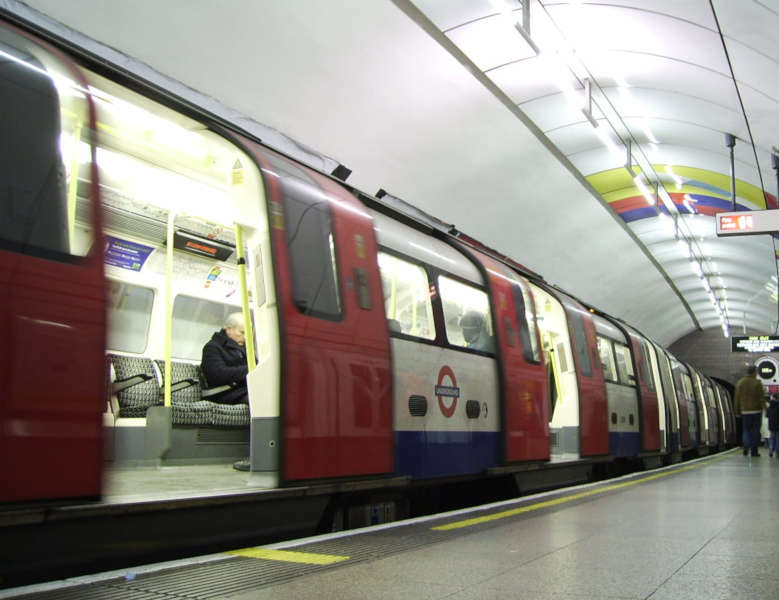
![]() By:Lars Engvik
By:Lars Engvik
Finally the project is nearing completion and it is assumed that additional heating capacity will be available for local consumers in Islington early 2020.
On November 15th 2013 a new deal was announced by the Mayor of London to capture surplus heat from underground tunnels and an electrical substation to help warm homes and cut energy bills.
Under this project the plan was to expand an existing district heating network to capture and utilize two local sources of waste heat, one from a London Underground ventilation shaft and the other from an electrical sub-station owned and operated by UK Power Networks.
The London Underground is a considerable source for heat. A lot of heat is generated from the trains, in particular during braking.
Even if hot air is vented to the atmosphere a lot of the heat do not escape but is stored within the underground tunnels, causing increased heat levels.
Older systems and trains generate more heat than modern equipment since the older equipment often has limited possibilities for regenerative braking.
A 1MW heat pump will be used to capture and transfer heat from the underground ventilation system to the water based district-heating system.
What does a heat pump do?
Heat pumps transport heat from a lower temperature level (a colder space) to a higher temperature level (a warmer space), hereof the term “pump” since the heat seemingly do not flow in its “normal” direction from warm to cold.
Heat pumps are used both for heating and for cooling purposes.
The most common heat pump devices are; air heaters, water heaters, air conditioning units, refrigerators and freezers. The term “heat pump” is most often used to describe a heating device.
Common types of heat pumps are:
- Air to air heat pump (transporting heat from outdoor air to indoor air).
- Water to air heat pump (transporting heat from a water source with stable temperature, to the indoor air).
- Water to water or air to water heat pump (transporting heat from a source with stable temperature to a water heater providing hot water for various heating purposes).
How heat pumps work
If two objects or mediums of different temperature are connected, heat will flow from the object with the higher temperature to the object with the lower temperature until thermal equilibrium (equal temperature).
A cooling medium is used to transport heat from the low temperature side to the high temperature side of the heat pump.
This is done through expansion and compression, transforming the cooling medium from gas to liquid and back to gas again, the result being that the cooling medium absorbs heat when it is expanded and have a low temperature, while it releases heat when compressed and having a higher temperature than the surroundings.
A certain amount of “high-grade” energy, such as electrical power is needed to run this process.
You can read more about heat pumps here: heat pumps
Bunhill Energy Centre
Regenerating energy
The Northern Line, which is supposed to be the oldest deep level metro line in the world, will be used to heat homes, offices and leisure centres in London.
As far as I know this project is first of it`s kind.
The Greater London Authority has estimated that there currently is enough heat wasted in London to meet 38% of the city’s heating demand.
The heating source used in this project is a London Underground ventilation shaft, located at a abandoned tube station on City Road (Closed August 8th 1922 due to low traffic and need for reconstruction to remain in operation).
18-28 degrees Celsius air, normally exhausted to the atmosphere is now exploited by a heat pump, which capture and upgrades the heat to around 70 degrees Celsius.
Since the heat pump needs electricity to work two gas-fired CHP, combined heat and power (237 KWe each) engines has been incorporated.
The engines provides heat as well as supplying electricity directly to the heat pump when the power from the grid is most expensive, helping reduce the cost of the heat.
The heat pump’s two-stage high temperature refrigeration system works in tandem with a coil that can both draw heat from, or release cooling into the London Underground.
This system combining the heat pump and the two low NOx, combined heat and power gas engines enables demand response to the national grid the following way:
- Consuming electricity directly (heat pump only operation)
- Operating with no electrical load on the national grid (heat pump and gas engines both operating)
- Exporting electricity to the national grid (gas engine only operation)
According to National grid carbon emission estimates, this network has a carbon intensity of 0.107kg/kWh.
Some of the parties that has been involved in this project are:
Mayor of London
Islington Council in London
Bunhill Heat and Power Network
Greater London Authority
Ramboll
(References/Sources: Ramboll.com, london.gov.uk, euroheat.org)
Illustration photo:”A train at Euston” by Cornelius Kibelka is licensed under CC BY-SA 2.0